On Nov. 24, the U.K. Home Office announced it had banned the Palestinian Islamist faction Hamas in its entirety under the country’s 2000 Terrorism Act. While Hamas’s military wing has been on London’s list of proscribed terror groups since 2001, British Home Secretary Priti Patel had pushed for a complete ban of the organization, noting it was no longer possible to differentiate between the faction’s political and military wing.
Seeing as Hamas rules the still-besieged Gaza Strip, this move will surely worsen the already devastating humanitarian crisis in the Palestinian coastal enclave. However, this risk did not deter the British government’s plans to blacklist Hamas, not least because Gaza is rarely viewed in a sympathetic light. In fact, the enclave frequently finds itself outside the scope of normal conversation on Israel-Palestine. It is instead viewed as an exceptionally contemptible place that deserves exceptionally repressive measures.
This was evident during the Israeli 11-day military campaign in Gaza in May. Israeli airstrikes killed an estimated 250 people in Gaza and destroyed 2,200 Palestinian homes, according to Palestinian officials. (Israeli officials have questioned that number.)
However, on May 12, the White House released a statement noting U.S. President Joe Biden conveyed his “unwavering support for Israel’s security and for Israel’s legitimate right to defend itself and its people” to then-Israeli Prime Minister Benjamin Netanyahu. The next day, Biden added there had “not been a significant overreaction” on the part of Israel. There was no mention of Gaza, Palestine, or Palestinians in the statement.
A Morning Consult poll conducted during Israel’s May bombardment showed only 11 percent of U.S. voters were sympathetic to Palestinians while 28 percent still sided with Israel. Support for Palestinians was 19 percent among Democrats and 3 percent among Republicans. Another survey showed half of Jewish Israelis believed there were no clear winners at the end of the Israeli campaign. However, a majority of the population considered the Gaza operation justified and believed it should have lasted longer.
Israeli authorities also seem particularly aware of the stigma surrounding Gaza. Indeed, at the very onset of May protests in the Jerusalem neighborhood of Sheikh Jarrah—where Palestinian families threatened with eviction led a protest movement some analysts argue helped catalyze tensions in Jerusalem’s Old City, which were followed by the Gaza conflict—Israeli authorities were quick to claim Hamas was responsible for the “escalation” in Jerusalem even though there was no evidence of the organization’s involvement. Eventually, Israel launched Operation Guardian of the Walls, and the news cycle shifted away from the forced expulsions of Palestinians in Jerusalem.
Seemingly, Gaza has a tendency to divert attention from fundamental questions of Palestinian rights to land, sovereignty, and national liberation, which led to the protests in Jerusalem. But Gaza is hardly a diversion. On the contrary, its politics is very much an embodiment and outcome of the wider politics of Israel-Palestine.
Gaza exemplifies the impact the 1948 establishment of the state of Israel had on Palestine and Palestinians. In fact, before the Nakba (or “catastrophe”), Gaza was not seen as a distinct territory besides being a part of the southern district of the British Mandate for Palestine. Following the Nakba, the Palestinian “refugee problem” had an impact on the entire region’s demographic makeup. But it also created Gaza and shaped its political and economic future.
The population of the coastal enclave tripled between 1947 and 1948 with the influx of 220,000 to 250,000 Palestinian refugees from Jaffa and the southern coastal region. Gaza suddenly became not just one of the most densely populated places in the world; it was now also a place where a majority of the population were refugees.
The Gaza Strip has also been far more impoverished than the West Bank. Under Egyptian rule and immediately after the Nakba, Gaza faced an economic collapse with the closure of its port and loss of most of its agricultural land during the war. Being rural-based and small-scaled, Gaza’s economy was also largely ill-equipped to provide for the newly arrived refugee population. The United Nations Relief and Works Agency (UNRWA) was established in December 1949. It began operating in Gaza the following year, when it assumed the role as the sole responsible agency for the socioeconomic needs of the enclave’s refugees.
Egypt was primarily concerned with consolidating its military rule over all aspects of life in Gaza and did little to foster economic or infrastructural development. Egyptian officials were appointed to the helm of all public offices, and Palestinians were excluded from prominent administrative positions. Indigenous Gazans were closely monitored by Egypt, and refugees were largely relegated to the margins of social and economic activities.
Following the 1956 Suez Crisis, Egypt was less inclined to allocate resources toward preventing Palestinian armed factions from entering Israel. As a result, the Egyptian military loosened its grip over life in Gaza. And in the last decade of Egyptian rule, the Port of Gaza reopened and made a free trade zone. Gaza’s citrus farmers also gained greater access to the global market, including in Eastern Europe. That said, while these economic activities benefited the indigenous Gazan population, the enclave’s refugees remained economically disenfranchised and dependent on the UNRWA and other international donors.
After the 1967 Six-Day War, Gaza saw some economic development under direct Israeli occupation, boosted primarily by the comparatively higher earnings of Gazans working in Israel. Within the next two decades, Palestinians from Gaza made up 60 percent of the total Palestinian labor force in Israel, up from 10 percent in 1970. This led to a growth in demand in the local economy. At the same time, it weakened the traditional indigenous elite in Gaza and fostered a new counter-elite who would go on to play a central role in the Palestinian national movement.
However, large-scale economic growth eluded the Gaza Strip seeing as the economy was dependent on wages earned in Israel and remittances. This meant the internal economy remained structurally weak and underdeveloped. There was also minimal Israeli investment in key sectors of Gaza’s economy. Disposable incomes earned in Israel and sent back through remittances were largely used to buy durable Israeli consumer goods, so the uptick in consumerism did not economically benefit the Gaza Strip.
As the Palestinian-American academic Edward Said once wrote, Gaza was “the essential core of the Palestinian problem, an overcrowded hell on earth largely made up of destitute refugees, abused, oppressed, and difficult, always a center of resistance and struggle.”
Indeed, Gaza has been at the forefront of Palestinian revolutionary activism. Between 1948 and 1967, under Jordanian rule, the Palestinian Muslim Brotherhood in the West Bank was forbidden from attacking Israel from within Jordan. Instead, it was allowed to participate in state politics at the local and national level. In comparison, refugees were the primary constituency of the Gaza branch of the Muslim Brotherhood, which had a long tradition of militancy, having actively participated in the 1948 Arab-Israeli War.
In 1954, then-Egyptian President Gamal Abdel Nasser banned the Muslim Brotherhood in Egypt and Gaza, saying the Islamist organization had plotted to assassinate him. Also, Egyptian authorities engaged in a sustained effort to suppress Palestinian resistance activism in Gaza as an extension of its efforts to counter Islamist activism in Egypt. But this also meant that without access to formal politics under Egyptian rule, military tactics were the only available means of political engagement in Gaza.
So throughout the 1950s, Gaza was the center of clandestine military and political activism against Israel and also served as a training ground for prominent Palestinian revolutionary figures.
Given this history, it is not surprising Gaza played a central role in initiating the First Intifada, or that among the founding members of Fatah (originally known as the Palestinian National Liberation Movement) were Palestinian refugees from Gaza, or that key figures at the helm of armed factions like Palestinian Islamic Jihad and Hamas grew up in destitute conditions in Gaza’s refugee camps.
Those sympathetic to Gazans’ suffering also tend to view the coastal enclave as exceptional—albeit, as a place of exceptional suffering. It’s not misguided to lend visibility to the impact a stifling siege and several Israeli military campaigns had on life in Gaza. In 2012, the United Nations declared Gaza would be unlivable by 2020. The enclave’s humanitarian crisis was even more apparent with the onset of the COVID-19 pandemic. But it should not come as a surprise. There is a reason Gaza is the target of exceptionally repressive measures and a place of acute suffering.
Israeli leaders have long been vocal about their contempt for the place. That’s because Gaza’s existence—and its historical role as the core of Palestinian struggles against the demographic, economic, and political consequences of Israeli occupation—is a frontal challenge to Israel’s self-conception as a just and democratic nation.
In 1992, then-Israeli Prime Minister Yitzhak Rabin famously said he wished Gaza would simply “sink into the sea.” Current Israeli Prime Minister Naftali Bennett once described Gaza as a “fortress of terror.” During Operation Pillar of Defense in 2012, then-Israeli Interior Minister Eli Yishai called on the Israel Defense Forces to send Gaza “back to the Middle Ages.” Of course, Israel’s military strategy in Gaza is often seen to be akin to “mowing the grass,” where Palestinian armed factions are like “weeds that need to be cut.”
This antagonism is also rooted in the fact that Gaza contradicts the core founding myth of the state of Israel—namely, that it was built on “a land without a people for a people without a land.” This is not to say Zionist ideologues and political leaders were unaware of Palestinians’ existence. However, they were committed to making this myth a reality. This commitment to making Palestine terra nullius was implicit in political activist Theodor Herzl’s utopian Zionist vision of a modern Jewish state in Altneuland: The Old-New Land, writing, “if I wish to substitute a new building for an old one, I must demolish before I construct.”
Similarly, speaking of the manner in which Israel was established, former Israeli military leader Moshe Dayan said: “Jewish villages were built in the place of Arab villages. You do not even know the names of these Arab villages, and I do not blame you because geography books no longer exist. Not only do the books not exist, the Arab villages are not there either.”
However, Gaza’s existence is a reminder that terra nullius was never actually achieved. In 1948, Gaza became not just a place where the majority of the population were refugees. These refugees—angry, impoverished, and downtrodden—also collectively bear the burden of the memory of Israel’s violent birth and the manner in which it sought to erase the existence of Palestine and Palestinians.
As a consequence, Gaza today is at the core of militant commitment to the Palestinian national movement. But this also means the severity of Israel’s treatment of Gaza is only a reflection of the challenge it poses to the idea that Israel was built on a land where Palestinians did not already exist as a nation.
Gaza is where hostilities reach their peak. This is only because it is a place where the ideological conflict between the Palestinian national movement and the assumption that the land was “without a people” is most severe. Thus, the United States’ policy approach has been to leave the besieged enclave as is once hostilities subside. But that is misguided.
Gaza is not the exception; it is the rule—and it should be treated as a microcosm of the wider politics of Israel-Palestine. Finding a way to actively address the crisis in Gaza may provide the basis for formulating a lasting solution to the conflict as a whole.


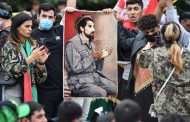
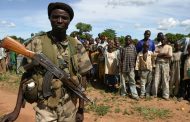
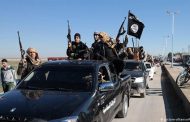
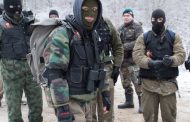
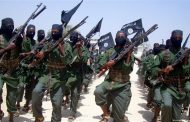
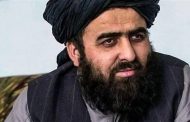
































admin in: How the Muslim Brotherhood betrayed Saudi Arabia?
Great article with insight ...
https://www.viagrapascherfr.com/achat-sildenafil-pfizer-tarif/ in: Cross-region cooperation between anti-terrorism agencies needed
Hello there, just became aware of your blog through Google, and found ...